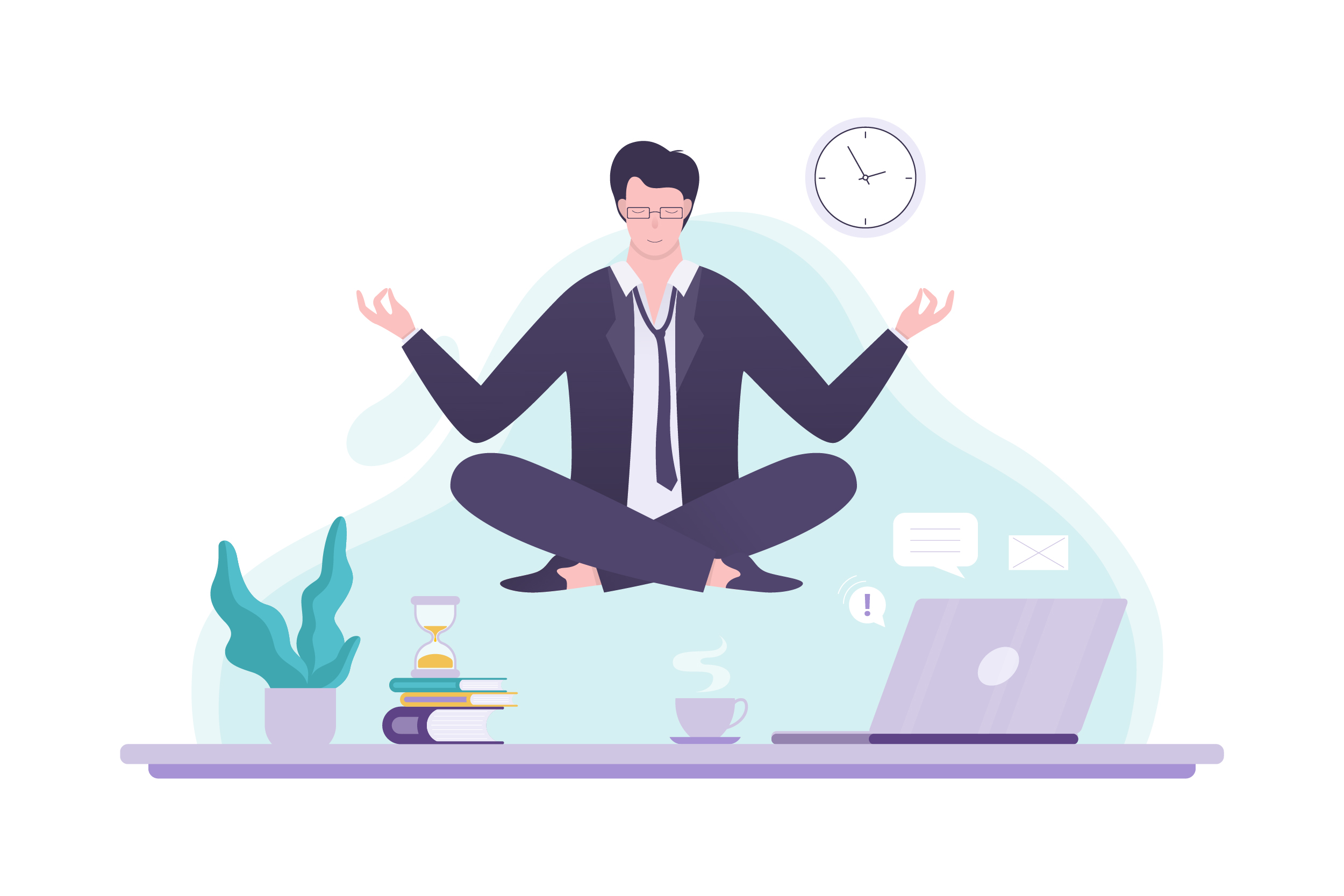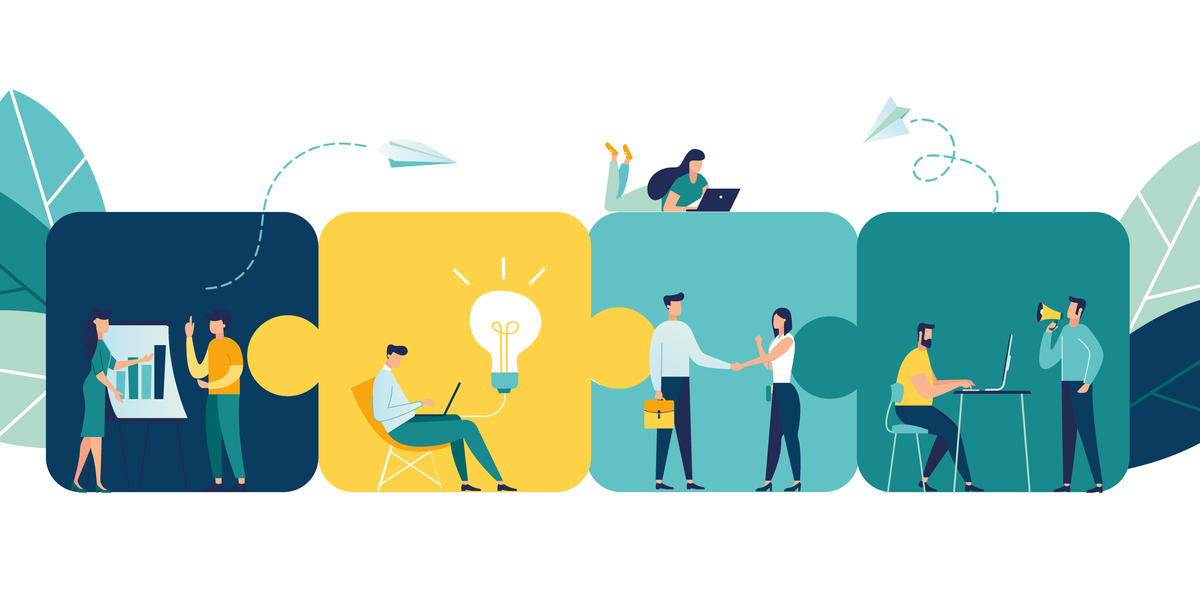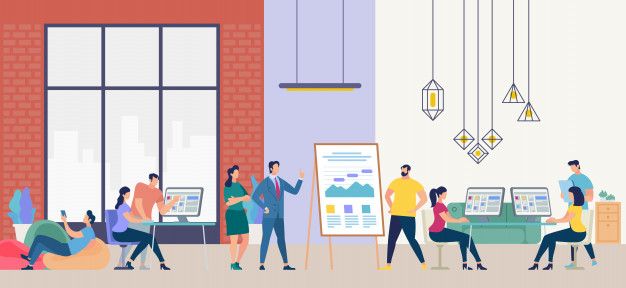Insights on the future of work from the Workplace Wellness Conference
01 September 2020
Uncategorized
What will the workplaces of the future look like? How will they adapt following Covid-19? Here’s all the insights from leaders and experts from the Workplace Wellness Conference 2020.
The discussion about the future of workplaces continues to be one that rapidly shifts. From companies who are abolishing workplaces in favour of working from home, to studies that suggest 88% of people actually want some sort of office to return to, the decision is clearly not final.
I recently attended (virtually) the Workplace Wellness Festival to hear from leaders and experts across the industry on their views of the future of the workplace. Mental health is perhaps the most dominant theme of the festival, however if I had to sum up the vibe of the conference, it would be this:
“The workplace most definitely is not dead, though it will be different. What we’re seeing now is a demonstration that people can permanently work from home. But just because you can, doesn’t mean you should.”
The conference itself featured several conference tracks, covering topics from mental wellness, employee engagement, financial health, and designing workplaces of the future, as well as special presentations from keynote speakers.
I attended as many sessions as I can across a broad spectrum, and have captured findings, resources, and strategies below. I’ve structured this by sharing key insights and findings first, followed by actions, takeaways, and resources.

Keynote speakers: The view from the top
Dr Norman Swan, respected health journalist, ABC Television & Radio National
- Worth remembering: 9 months ago, only 1 or 2 people in the whole world had the virus
- One of the biggest problems in our environment is a sense of uncertainty, which hasn’t been helped by new outbreaks, even in New Zealand
- One of the most comprehensive and longitudinal studies on mental health ever conducted - in which a group of people were monitored from their childhood all the way up to the mid-40s - suggest that 84% of people will pass through at least 1 period of significant mental health issues
- We don’t have the same expectation of mental health treatment as we do of physical health. It’s natural to visit GPs or specialists when we feel physically sick, but only 1 in 3 Australians who need specialist mental health care can access it. Imagine if we said this of breast cancer, or cardiac disease?
- Studies show that disasters often contribute to a 20% increase in mental health cases for those affected… but the pandemic affects allof us
- The Australian Government has actually done more than many other countries in focusing on mental health. They’ve boosted crises lines, put out encouraging messages, etc, however there is still a big gap that organisations and communities collectively need to fill
- It’s time shift our language from ‘social distancing’ to ‘physical distancing’. We all understand the importance of minimising the risk of transmission, but we don’t want to minimise the social connection of our lives
- To paraphrase Charles Darwin: “Survival of the species is not survival of the strongest or the most intelligent, but those best able to adapt to the changing environment.”
Gordon Cairns, Chairman, Origin Energy and Woolworths Group
- 90% of Australians think having a healthy workplace is important, but only 51% think their employers are actually developing systemic initiatives that support mental health’
Actions and takeaways
- Norman Swan: When working from home, there needs to be a sense of agency so people don’t feel cast adrift. They need to feel like they’re part of a team, to be able to make decisions and influence decisions without meeting face to face. Will not maintain wellness if we lose that agency
- Patrick McGorry: Hope is something that is in short supply, both in workplaces, communities, and more broadly in society. When dealing with a suicidal patient, the key thing is to make sure that they don’t lose hope. Collectively, we are obviously going to get through this, but we must continue to present messages of hope
- Shane Fitzsimmons: As leaders, we need to be authentic and not pretend that mental health issues aren’t affecting people in some way. We have to be genuine about creating an environment in which “It’s ok not to be ok”
- Gordon Cairns: Fundamentally, remember that our products are the same, our services are the same, but the big difference for any company is the staff. We really need to take care of our staff
On mental health

Jack Heath, CEO, Sane Australia
- Before COVID-19, we were already struggling with mental distress in the workplace. We spent so much time being busy and rushing around that we never had much time to reflect.
- The reality is that many people are uncomfortable dealing with drastic change. Now, COVID is forcing people to deal with mental health stress for the first time, in ways that also amplify pre-existing conditions
- A lot of this does relate to secure income, thus for people who are at fear of income loss, this is where they really struggle
Kate Connors, Director of Wellness, PWC
- PWC has a ‘Green Light to Talk’ program, in which staff are encouraged to talk about all forms of mental health issues. This is rolled out by advocates of the program recruited from the staff
- Staff were screened and trained however in order to choose the right advocates, given they are the face of the program
- There has been a drop in staff accessing Employee Assistance Programs (EAPs)
- Many people are experiencing alexithymia, which is the inability to recognise or describe one’s own emotions. What contributes to this is an inexplicable awkwardness about something not feeling right, a lack of supplies, and a lack of consistent information
Carli Phillips, Employee Wellbeing Lead Australia & New Zealand, Johnson & Johnson
- Similar to PWC, Johnson & Johnson also encourage leadership from employees in terms of mental health, such as providing mental wellbeing webinars delivered by their own employees
Sally Phillips, General Manager Health Services, TAL
- Recognise that financial health, physical health, and mental health are intrinsically linked. The more stress on financial health, the more stress on physical, and the greater the impact to mental health
- Previously, where there were numerous little health and wellbeing programs, TAL have instead focused on 1 or 2 programs that look at health holistically, encapsulating all 3 components
- Make sure whatever efforts you go to for your customer, is also done for employees
ACTIONS
- People in HR / P&C are often the ones to start programs that focus on mental health and provide support, but ultimately Leaders are the ones who have incredible visibility and must walk the talk.
- Similar to above, leverage the power of leaders to share personal stories to reduce stigma. This was found to help more employees access mental health support programs.
- As an organisation, you don’t need to apologise for ‘the new normal’ (thereby acknowledging its weirdness). However what can be useful is creating channels of information that allow people to check and assess whether a new habit is ‘normal’ or not.
- A consistent message from all presenters is the vital need to deeply listen to staff. As a simple example of how this can manifest, instead of telling staff what the company culture is, ask staff to define it. Furthermore, consider active listening training for leadership and peers
RESOURCES
- For leaders and business strategists, this is a great depiction of the major PESTLE concerns around the world according to 347 risk analysts.
- EAPs exist to help staff, but appear to be under-utilised. As a starting point, Converge, Uprise, and Employment Innovations appear to offer national programs. NB - These are not paid endorsements.
- Consider the establishment of Peer Support Groups (aka Masterminds, Group Consults, etc) that encourage regular check-ins within smaller groups, creating a safe space in which to support each other. Having facilitated numerous such groups, we know there numerous do’s and don’ts involved, that ensure a ‘safe’ environment is established. If you’re interested in a facilitated session or to find out more, please contact us here
On financial health

Alison Gray, Founder/Director, Wellthy
- People are under financial stress, with 30% of families living under financial stress already
- Holistically, understand that financial stress is not just the employees themselves, that it can also be the people around them who are struggling, whether that’s partners or children (e.g. many children are moving back with parents)
- There are national debt helplines and government support services, but there is an onus on companies to do more
- Financial support does not need to be just in salaries; one option is to leverage buying power to support at small transactional levels, such as subscriptions to food services, essential services, etc
Paul Feeney, Founder, Map My Plan
- $31bn have been paid out of people’s retirement savings. For many, this has been a lifeline they needed to make ends meet. However this will create issues for future government and pressures
- 58% of employees want their employers to help improve financial wellbeing, however only 16% actually do
People are under financial stress, with 30% of families living under financial stress already
Jessica Yun, Workplace & Careers Correspondent, Yahoo Finance Australia
- At the moment, we have 7.4% unemployment rate (~1 million) however that’s using the government definition of unemployment, which discounts low volume casual and part time employment. If we consider effective unemployment, we’re looking more at 11.7%
- Property prices have slid the past 3 months
- There is no such thing as a free lunch. Government schemes now in some ways enable us to ‘steal’ from our future selves, in order to support our present day selves
ACTIONS
- Provide employees with practical tools, such as budget tools, connections with certified financial advisors, and online tools that help manage personal finance.
- Consider the extension of financial benefits to your staff’s household, not just the employees themselves.
- Companies can also consider alternative types of packages and financial assistance, such as part loans / grants.
RESOURCES
- This is a free app called UnderstandingSuper, developed in partnership with University of Western Australia and CPA Australia that teaches people the basics of superannuation.
On employee engagement

Verity Bell, Global Head of Events & Engagement, Atlassian
- From an information and resource sharing perspective, Atlassian established a ‘single source of truth’ type platform in which all resources, decisions, and company information was shared and regularly updated. Anything in this resource was considered ‘gospel’, thus minimising risk of conflicting information
- Support and engagement is provided not just to individuals, but to families as well. For example, Atlassian offered a virtual ‘adventure camp’ of sorts for children
- Atlassian have found that going niche in terms of interests and social groups can be more effective than single events that engage everyone. For example, a niche social group for fans of Star Trek was more engaging for participants, rather than a large group with all staff attending
Holly Collins, Head of People, ANZ, Bupa
- What we’re seeing is a demand for more channels to communicate. This means ‘hard’ and ‘soft’ channels, the ability to share voices publicly, privately, and even anonymously in order to foster psychological safety.
- We designed a 7 minute survey that our people on average took 35 minutes to fill in, suggesting that people responded when they felt like they really had an opportunity share a voice
Linda Hibberd, Executive General Manager, People Experience, PEXA
- People are sharing more of themselves, and learning more about each other than we ever have before. This means that as a community, we are naturally improving human connection between people, as opposed to surface level connections. Our job is to amplify that
- People are investing time to share insights with us on how they’re really doing, what they are thinking about, and what they really want. Our job is to listen to that
Bernard Desmidt, author Inside-Out Leadership
- There’s people who are suffering from FOMO (Fear of Missing Out) who really want to get back into the workplace. But then there’s also ‘SOMO’ (Sad to be Missing Out) as well as ‘GOMO’ (Glad to be Missing Out). Irrespective of the group, everyone has a voice that deserves to be listened to
- There are also two types of concerns: ‘Known Spoken’ vs ‘Known Unspoken’, the latter of which can sometimes be suppressed for fear of what others may say. For example, people might talk about their circumstances of being stood down or furloughed… but they may not talk about their sense of rejection, shame, and abandonment
- Be aware of inadvertently discriminating against people who work flexibly, and make sure that all people in the organisation get access to the same support services, not just those who are seen in the office
Sue Langley, Founder & CEO, Langley Group
- What can sometimes be missing in mental health and wellbeing programs is teaching people how to check in on emotional health
- Each person will take to wellbeing efforts differently, meaning we need to consider person - activity fit
- Create moments for people to connect, even if it’s a small moment
ACTIONS
- Encourage staff to create small niche social groups around shared personal interests, then provide supporting resources that support those groups. This can include paying for subscriptions for the team, or little gifts and products to connect people together.
- Communicate more than you think you need to. And listen more! This was mentioned above but is reiterated here.
- Consider creating a ‘single source of truth’ on everything related to staff engagement, business policies, support services, etc, and keep this updated as much as possible.
- Create more ‘hard’ and ‘soft’ channels for staff to engage and voice their concerns publicly, privately, and potentially even anonymously.
- For leaders to lead from a place of vulnerability, to share ‘unspoken concerns’ that legitimise staff concerns. And to consider an Ask Me Anything type session, and not be afraid of questions that arise.
- Consider assigning (voluntarily) ‘wellness buddies’ within teams to empower team members, create closer interpersonal connections, and establish more safety nets for mental health.
RESOURCES
- Have a look at these three articles from the Harvard Business Review, the Brunswick Group, and McKinsey on additional methods, techniques, and research. They echo many of the points above but has some useful suggestions.
- A consistent message from several industry leaders focus on empowering staff to make decisions. One panel suggested the adoption of the W Leadership Framework, a process in which leadership and staff co-design programs.
- If you’re a bit over the really practical / pragmatic stuff, then get in touch with us for a list of completely non-work-related engagement activities. It doesn’t always have to be about work!
On the future of the workplace

Gino Carrafa, Directing Manager, Psychologist, D’Accord OAS
- We need to think about what we were before this time, as we rely on our environment to ‘feed us’ during the day. Open spaces encourage dynamic conversations between people however this can mean people are included in conversations they didn’t want to be involved in.
- There’s much research that show open plan has been a major contributor to stress. And now, given we’ve become used to working in our own homes and in our own minds, the transition from home to the workplace will be the key issue to maintain.
Melissa Marsden, Founder and Director, COMUNiTI
- What demonstrates good workplace culture? The 4 typical factors are: 1) Recommending to others the organisation as a good place to work; 2) Taking pride at work; 3) Undertaking discretionary effort to go ‘above and beyond’; and 4) An intention to stay
- Physical environment will be important in the future as it provides us with the space that enables us to connect, and is something that people can be proud of
- However workplaces will also need to give people a strong reason to return, that there must be a greater benefit beyond being ‘just’ a place of work
Chanel Nesci, Psychological Health & Safety Leader, Bupa
- To help people maintain control of their lives and to build trust with the workplace, we should offer people the ability to choose when to return to work
Annelie Xenofontos, Senior Workplace Strategist, Axiom Workplaces
- Organisations are now realising that the workplace isn’t just about getting as many people into the workplace as possible in order to increase productivity; that there is a greater role for workplaces and how they support people
- Fundamentally, workplaces will need to be more focused on trust
Shelley McDowell, Director Customer Experience Strategy, CBRE
- EQ just as important as IQ for workplaces. What we’re seeing is that it’s not just about bricks and mortar, but about the people who work in the space
- It’s not just about luxury or catering, but about how we create spaces that the community can play a role in
- The choice between workplaces will no longer be binary (i.e. work vs home), and there will instead be a far wider range of possibilities and combinations
Scott Hazard, Global Real Estate and Workplace Experience Leader, Atlassian, USA
- It can be useful to think about workplaces from a retail perspective; that people go in for a range of different reasons. Thus the work environment can be designed to reflect that
- Atlassian tackled the challenge by balancing these 5 dimensions:
- Individual journeys - Everyone has a different reason for going to work
- Multiple work points - Not everyone will work at the same desk
- Individual agency - Provide lots of self-service amenities that promote agency, and encourages people to treat their work environment like home
- Cultural localisation - Design workplaces with the geo-cultural location in mind
- Experimentation - Try new things!
Domino Risch, Principal, Hassell
- Don’t underestimate the value of beauty in the workplace! Beauty is different for everyone, and it can trigger a variety of emotions, memories, and stories
- Make it a priority, and watch people flourish!
ACTIONS
- Despite the future being somewhat uncertain, we can pre-empt many of the potential needs of the future workplace. Now is the time to start having conversations with staff, with peers, and to think about what type of workplace people want to come back to.
RESOURCES
- COMUNiTI - one of the presenters at the Conference - have several resources dedicated to the return to work.
- ColourSpace also has our own Definitive Guide to Reopening Offices.
- CBRE publishes numerous free in-depth surveys and reports on the future of workplaces.
- Axiom also has several resources available on the design of workplaces in the future.

Looking for more even more tangible actions and resources? please also check out our Definitive Guide to Reopening Offices.
Want to take a small, affordable step in creating a more human work environment for people to return to? Get in touch with us today.





ColourSpace Gallery alert